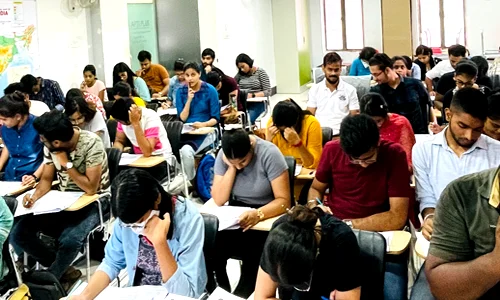



Sanchar Saathi boosts telecom security through tools like CEIR and TAFCOP, blocking stolen devices and fraudulent SIMs. But the mandate to pre-install a non-removable app on smartphones has raised privacy concerns. Moving ahead requires balancing security with strong data protection, transparency, public trust, and industry cooperation.
Click to View MoreThe MEA has launched Passport Seva Programme V2.0, a modernised passport system built using AI, cloud architecture, and microservices. It introduces ICAO-compliant ePassports with biometric chips to boost security, reduce fraud, support Digital India, and deliver faster, more efficient citizen services.
Click to View MoreTechnology is transforming governance in India by promoting transparency and efficiency through initiatives like Digital India, Aadhaar, and UMANG. These tools enable faster, corruption-free services and data-driven policies. However, challenges such as the digital divide, cybersecurity risks, and data protection remain crucial for inclusive governance.
Click to View MoreIndia is actively advancing towards 6G technology through strategic initiatives like the Bharat 6G Mission, Telecom Technology Development Fund, and 100 5G labs in academic institutions. Focused on indigenous innovation, global collaboration, and self-reliance, India aims to become a leader in next-generation telecom, enhance digital inclusion, and contribute significantly to the global 6G ecosystem by 2030.
Click to View MoreThe Rashtriya Vigyan Puraskar (RVP), instituted by the Government of India in 2023, is a prestigious national award recognizing outstanding contributions in science and technology. It has four categories—Vigyan Ratna (lifetime achievement), Vigyan Shri (recent distinguished work), Vigyan Yuva (for scientists under 45), and Vigyan Team Award (for collaborative innovation). The awards include a medal and citation but no cash prize, aligning with the spirit of the Padma Awards. The Principal Scientific Adviser (PSA) chairs the selection committee, which recommends awardees to the Minister of Science & Technology. RVP aims to promote scientific excellence, streamline recognition, and enhance the national stature of India’s science awards, though transparency and merit-based selection remain key for its credibility.
Click to View More
The Skilling for AI Readiness (SOAR) Program by MSDE aims to prepare India for the global AI revolution by training students (Classes 6–12) and educators in AI literacy, machine learning, and ethics. It aligns with Skill India Mission and Viksit Bharat @2047, promoting digital inclusion and future-ready talent.
Click to View MoreNITI Aayog’s AI roadmap promotes human-centric growth by driving large-scale skilling and reskilling, boosting startups, and ensuring ethical AI use. Targeting sectors like healthcare and agriculture, it aims to create jobs, promote innovation, and position India as a global AI leader for inclusive prosperity.
Click to View MoreThe National Agriculture Market (e-NAM) is a pan-India electronic trading platform that integrates existing APMC mandis to create a unified national market for agricultural commodities. Despite its benefits, challenges remain — including limited mandi coverage, poor digital infrastructure, low awareness, and varied APMC laws across states.
Click to View MoreIndia’s UPI expands to Qatar via Qatar National Bank and Qatar Duty Free, enabling seamless, real-time payments for Indian travelers. Driven by NPCI International, it boosts tourism, retail, and bilateral ties, showcasing India’s digital strength and advancing global payment interoperability.
Click to View MoreMana Mitra showcases transformative digital governance by delivering accessible, transparent, and scalable services through WhatsApp. If replicated nationwide with strong policies and safeguards, it can drive Viksit Bharat 2047’s vision, ensuring equitable, efficient, and citizen-centric access to government services.
Click to View MoreThe AI for Viksit Bharat Roadmap reimagines AI as India’s growth engine, enabling equitable prosperity through infrastructure, skilling, and governance. By bridging growth gaps and creating transformative jobs, India can spearhead responsible global AI leadership, realizing Viksit Bharat by 2047.
Click to View MoreUndersea cables, crucial for the global digital economy, pose a significant strategic vulnerability for India, particularly with Mumbai and Chennai landing stations. The recent Red Sea cable cuts highlight geopolitical and physical risks. To ensure resilience, strategic diversification of landing sites, simplified regulations, and indigenous repair capabilities are essential.
Click to View More
© 2025 iasgyan. All right reserved